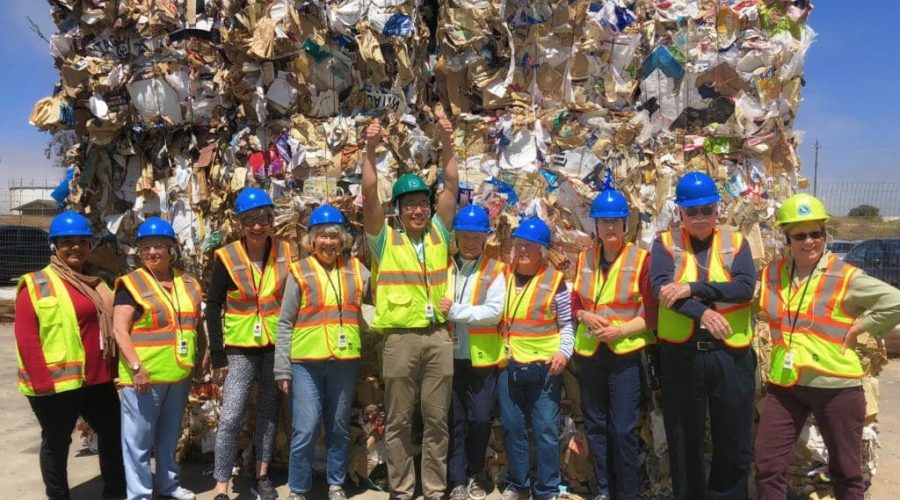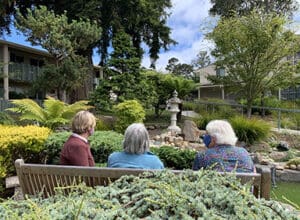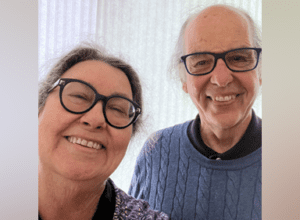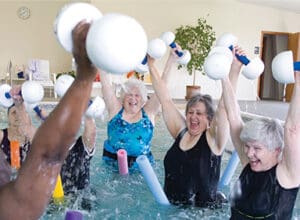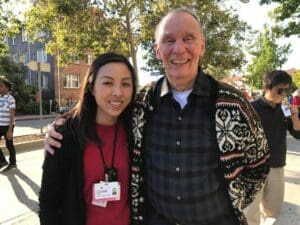“I’ve always been interested in the environment,” says Canterbury Woods resident Nancy Frost. “I was fortunate enough to spend my summers in a redwood forest. And how can you not be interested in the environment when you get to do that.”
For more than 30 years, Frost worked for the Government, first in the U.S. Department of Agriculture and then as one of the first employees of the Environmental Protection Agency when it was established in 1970, the same year as the first Earth Day.
After returning to California, Frost continued to work on environmental issues – a passion that did not stop when she moved to Canterbury Woods, a Covia Community. For the five years since she has lived here, Frost has provided resources and training to help her community “Reduce, Reuse, and Recycle.”
“When I moved here, there was a small program, which still exists, but there wasn’t an overall educational program for people about what items goes where,” Frost explains. “I was also the chair of the then Housekeeping Committee, now called the Environmental Services Committee. It’s our staff who pick up all of our trash and recyclables. And I could see from looking at what we were doing that there was a lot of confusion.”
Staff aren’t allowed to sort through recycle bins. “Somebody got injured by reaching in and there was a broken glass, so for the safety of our staff, they are not asked to do any sorting. So it’s really up to us as the individual residents,” Frost said.
Frost provides information to help residents know which items are recyclable and which are not. “I have many hats here, and one of them is called the Trash Lady. I will get calls and I will get notes: ‘where should I put this?’” She explains that the information on recycling changes regularly. “Since I’ve been here, we are under the third, going on fourth reiteration of what can be recycled because of what’s going on worldwide.”
Earth Day gives Frost a chance to provide more focused information for the community with a display that is placed in Canterbury Woods’ main hall for three days, giving people information and updates on what can be put in recycling as well as other steps they can take to reduce their environmental footprint.
As she prepares for this year’s display, “One of the things I have spread out here in my usually neat living room is a whole bunch of papers,” she says. “I’m going to try to show from the tree to the process down the road. And paper can only be recycled four to six times, and after that, it’s trash. But that last reiteration – the paper napkins, the Kleenex – those are things that are designed to absorb moisture, and it’s why we can’t recycle it, even if it’s just water. They have had their last life. So when I prepare this, I try to educate folks on the Why so that they can make a decision when something new pops up. It’s not just, ‘This is what you do.’”
Her educational programs have made an impact. “As a community here in Pacific Grove, we are probably the top-notch community recycler. There are so many retirement homes and senior living homes, so we’re grouped in with many other communities and commercial establishments. We had a presentation last year that showed we’re the one that probably does the most and the best.”
Mary Lou Kelpe, Canterbury Woods’ Wellness Coordinator, has worked with Frost on Earth Day and other events that encourage the community to be mindful of how they can make a difference. Kelpe reports that, along with the Earth Day displays, “Nancy also went with our residents twice last year to tour our new recycling/waste management facility. We learned a lot about all the new recycling rules as a community.” Their trip is featured in the photo above.
Recycling is only one part of the community’s environmental efforts. Residents reuse items by selling them in the Canterbury Woods store. And Frost encourages reducing the amount of waste products by offering suggestions, such as using handkerchiefs instead of facial tissues and reusable water bottles instead of plastic. In the dining hall, residents can choose to get dinner to go in reusable, microwavable containers. “You can heat your food in it, you can refrigerate it if you’re not going to eat it right away, and you return and it gets washed and it gets used again,” Frost says.
Even if people aren’t interested from an environmental standpoint, Frost notes that these small changes add up to significant financial savings. “It’s cheaper to put something in the recycle bin than it is in the trash bin. If you use less of things, it’s cheaper than if you’re getting a new thing each time. For example, instead of taking the little white bags to take something home from the dining hall each day, how about a reusable bag that you bring? There are little things that each person can do that make a difference.”
One thing Frost tries to emphasize each year is that “It matters.” “Earth Day is one day a year when we can remind everybody that really every day is Earth Day.” Due in part to Frost’s annual Earth Day displays, “I think people think about what to do with things that they no longer want or use, along with the daily trash. I think there’s a pretty heightened awareness. And I think also it’s something that people think about much more than they thought about five years ago. But even then, they were more conscious than the average community. I’m proud of people wanting to make a difference.”
